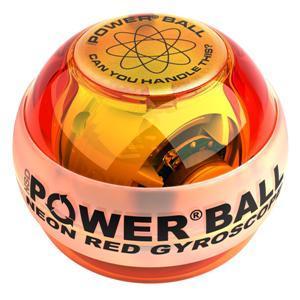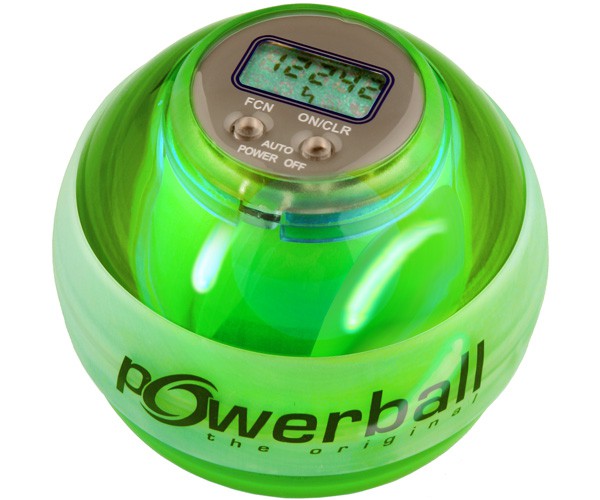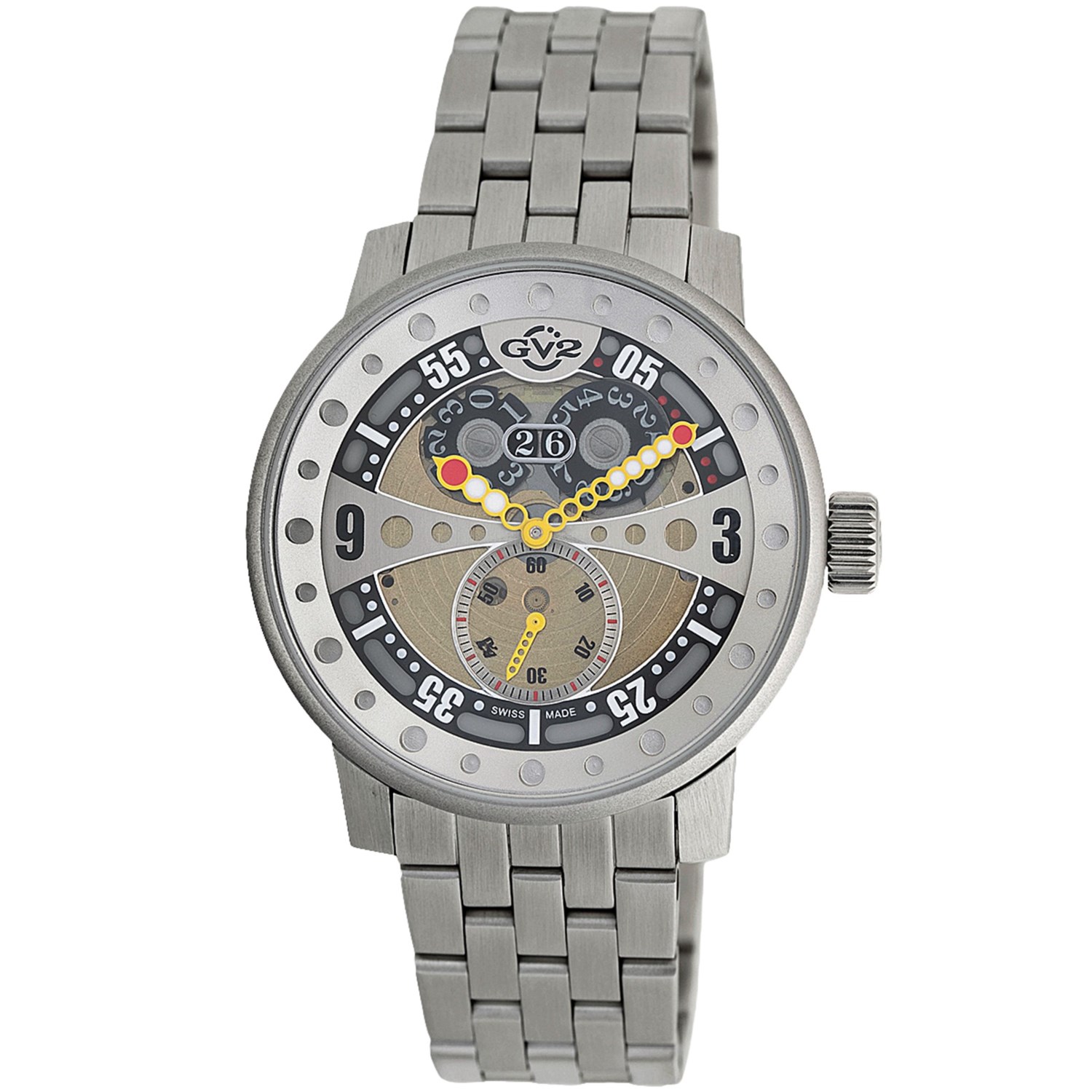Powerball Biography
This section's tone or style may not reflect the encyclopedic tone used on Wikipedia. See Wikipedia's guide to writing better articles for suggestions. (June 2011)
A DynaBee gyroscopic wrist exerciser.
The device consists of a spinning mass inside an outer shell. The shell almost completely covers the mass inside, with only a small round opening allowing the gyroscope to be manually started. The spinning mass is fixed to a thin metal axle, each end of which is trapped in a circular, equatorial groove in the outer shell. A lightweight ring with two notches in it for the ends of the axle rests in the groove. This ring can slip in the groove; it holds the spinning gyroscope centered in the shell, preventing the two from coming into contact (which would slow the gyro down), but still allowing the orientation of the axle to change.
Since the spinning mass is balanced, the only possibility to speed up the rotation is for the sides of the groove to exert forces on the ends of the axle. Furthermore, the normal and axial forces will have no effect, so tangential force must be provided by friction. If the axle is stationary, the friction will only act to slow down the rotation, but the situation is very different if the axle is turned by applying a torque.
This can be accomplished by tilting the shell in any direction except exactly in the plane of the groove, and results in a shift of the axle ends along the groove. The direction and speed of the shift can be found from the formula for the precession of a gyroscope: the applied torque is equal to the cross product of the angular velocity of precession and the angular momentum of the spinning mass. The most important observation here is that the direction is such that, if the torque is large enough, the friction between the axle and the surface of the groove will speed up the rotation.
This section's tone or style may not reflect the encyclopedic tone used on Wikipedia. See Wikipedia's guide to writing better articles for suggestions. (June 2011)
A DynaBee gyroscopic wrist exerciser.
The device consists of a spinning mass inside an outer shell. The shell almost completely covers the mass inside, with only a small round opening allowing the gyroscope to be manually started. The spinning mass is fixed to a thin metal axle, each end of which is trapped in a circular, equatorial groove in the outer shell. A lightweight ring with two notches in it for the ends of the axle rests in the groove. This ring can slip in the groove; it holds the spinning gyroscope centered in the shell, preventing the two from coming into contact (which would slow the gyro down), but still allowing the orientation of the axle to change.
Since the spinning mass is balanced, the only possibility to speed up the rotation is for the sides of the groove to exert forces on the ends of the axle. Furthermore, the normal and axial forces will have no effect, so tangential force must be provided by friction. If the axle is stationary, the friction will only act to slow down the rotation, but the situation is very different if the axle is turned by applying a torque.
This can be accomplished by tilting the shell in any direction except exactly in the plane of the groove, and results in a shift of the axle ends along the groove. The direction and speed of the shift can be found from the formula for the precession of a gyroscope: the applied torque is equal to the cross product of the angular velocity of precession and the angular momentum of the spinning mass. The most important observation here is that the direction is such that, if the torque is large enough, the friction between the axle and the surface of the groove will speed up the rotation.
Powerball
Powerball
Powerball
Powerball
Powerball
Powerball
Powerball
Powerball
Powerball
Powerball
Powerball
Powerball
Powerball
Powerball
Powerball
Powerball
Powerball
Powerball
Powerball
Powerball




















No comments:
Post a Comment